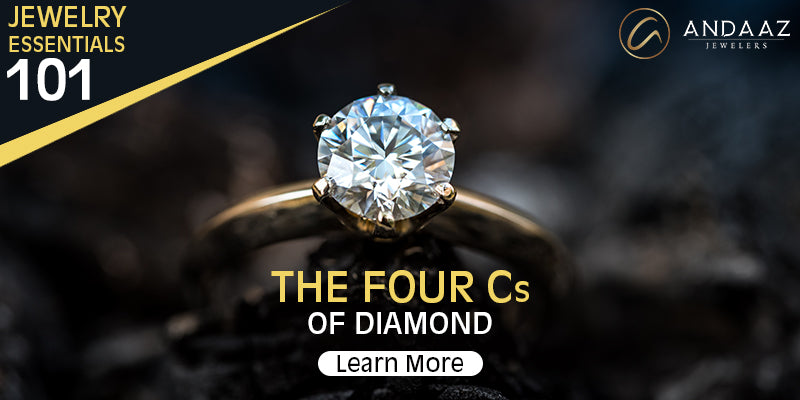Diamond 101 - Understanding the 4 C's

Beautiful. Rare. Cherished.
There is no gemstone quite like a diamond. Every diamond is unique, yet all diamonds share certain features that allow us to compare and evaluate them. These features are often referred to as the 4 C’s. The 4 C’s: Cut, Color, Clarity, and Carat- provide a way to objectively compare and evaluate a diamond’s characteristics.
CUT

A diamond’s cut is the most important element to consider when buying a diamond. A polished diamond’s beauty lies in its complex relationship with light. The magnificent display you see is made-up of three attributes (Brightness, Fire, and Scintillation): Brightness is the combination of all white light reflecting from the surface and interior of a diamond. Fire describes the “flares” of color emitted from a diamond. Scintillation describes the pattern of light and dark areas and the sparkle you see when the light hits the diamond.

COLOR
Most diamonds range from colorless to light yellow or light brown. The most recognized grading scale starts at “D” color and goes all the way down to “Z” color with “D” representing colorless and “Z” representing yellow/brown. Prices also move in unison with color with colorless being the most expensive and diamonds with more yellow/brown overtones being less expensive. The rarest stones are actually natural colored diamonds, such as blue, red, and pink and they are known as "fancy” colors. These diamonds have their own grading scale and tended to be the most expensive due to their rarity.

CLARITY
Diamonds can have internal characteristics known as inclusions or external characteristics known as blemishes. Diamonds without inclusions or blemishes are rare; however, most characteristics can only be seen with magnification. Because diamonds form under tremendous heat and pressure, it is extremely rare to find a diamond that lacks any internal and external characteristics.


CARAT
The carat is the diamond’s physical weight measured in metric carats and nothing to do with the size of the stone, contrary to popular belief. For diamonds under one carat, each carat is divided into 100 points - similar to pennies in a dollar. 0.75 ct = 75 points. 1/2 ct = 50 points. Carat weight is the most objective grade of the 4Cs.

“There is no other gemstone quite like a diamond. It is found in the most remote places on earth, and the fact that it forms at all is something of a miracle. It takes about one ton of rock to recover less than half a carat of rough, making diamond one of the rarest and most desired gemstones in the world. A diamond is a testament of endurance and strength- and not surprisingly, the ultimate symbol of love. “ - Gemological Institute of America
***Pro Tip***
Diamond weights have what is known as “magic numbers”. These are round numbers where the price often jumps dramatically such as 1.00 carat, 1.50 carat, 2.00 carat, ect. In order to get better value try finding a diamond that is just under a magic number such as 0.90 carat or 1.40 carat. The difference is size will be negligible but the cost savings can really add up.


